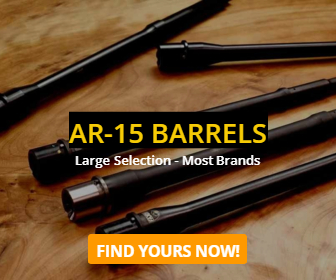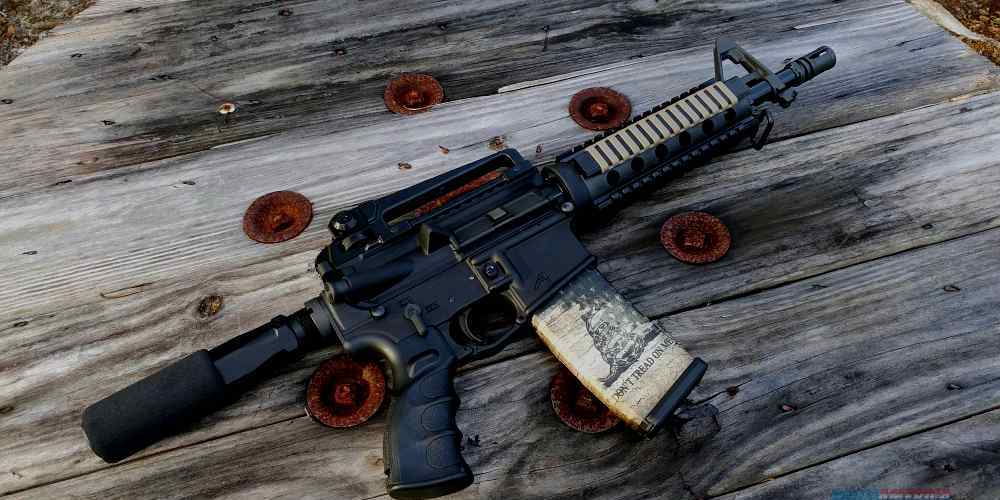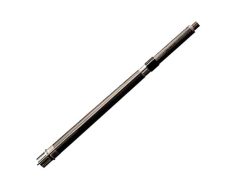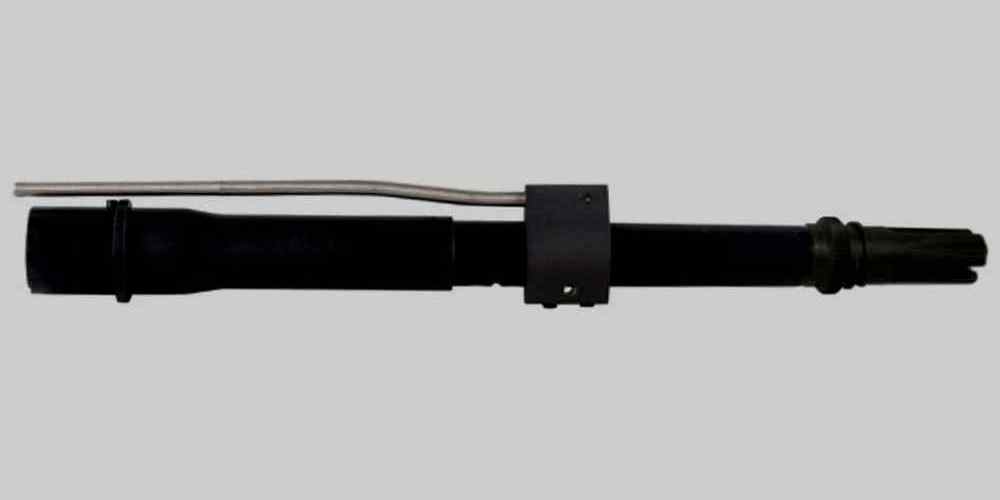Choosing the right barrel setup for your firearm.
Pros and Cons of Direct Impingement Systems
When it comes to choosing the right barrel setup for your firearm, one of the key decisions you’ll need to make is whether to go with a direct impingement system or a piston system. Both systems have their own set of pros and cons, and understanding the differences between them can help you make an informed decision.
Direct impingement systems, like those found in the AR-15 and M16 rifles, operate by diverting gas from the fired cartridge back into the action of the firearm to cycle the bolt. This system is known for its simplicity and lightweight design, making it a popular choice among shooters who value ease of maintenance and maneuverability.
One of the main advantages of direct impingement systems is their simplicity. With fewer moving parts than piston systems, direct impingement setups are generally easier to clean and maintain. This can be a major selling point for shooters who prefer to spend more time on the range and less time tinkering with their firearms.
Another benefit of direct impingement systems is their lightweight design. Because there are no additional components like pistons or op rods, firearms with direct impingement systems tend to be lighter and more maneuverable. This can be especially important for shooters who need to carry their firearms for long periods or in tight spaces.
However, direct impingement systems are not without their drawbacks. One of the main criticisms of this system is its tendency to heat up quickly during extended firing sessions. Because the gas from the fired cartridge is directed back into the action of the firearm, direct impingement setups can become hot to the touch after just a few rounds. This can be uncomfortable for shooters and may affect the overall performance of the firearm.
Additionally, direct impingement systems are often criticized for their reliability in adverse conditions. Because the gas from the fired cartridge is used to cycle the bolt, direct impingement setups can be more prone to fouling and carbon buildup. This can lead to malfunctions and decreased performance, especially in dirty or dusty environments.
Despite these drawbacks, direct impingement systems remain a popular choice among shooters for their simplicity and lightweight design. If you prioritize ease of maintenance and maneuverability in your firearm, a direct impingement system may be the right choice for you.
In conclusion, direct impingement systems offer a simple and lightweight design that appeals to many shooters. While they may have some drawbacks in terms of heat buildup and reliability in adverse conditions, the ease of maintenance and maneuverability of direct impingement setups make them a popular choice for many firearms enthusiasts. Ultimately, the decision between direct impingement and piston systems will depend on your individual preferences and shooting needs.
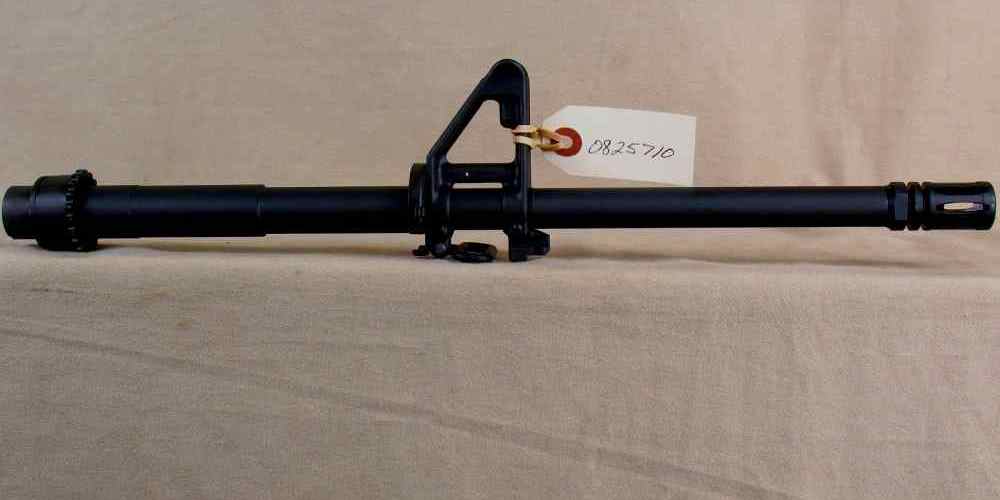
Pros and Cons of Piston Systems
When it comes to choosing the right barrel setup for your firearm, one of the key decisions you’ll need to make is whether to go with a direct impingement system or a piston system. Both options have their own set of pros and cons, so it’s important to understand the differences between the two before making a decision.
One of the main advantages of a piston system is that it tends to run cleaner than a direct impingement system. In a direct impingement system, gas from the fired round is used to cycle the action, which can lead to carbon buildup in the chamber and bolt carrier group. This buildup can cause malfunctions and decrease the overall reliability of the firearm. With a piston system, however, the gas is redirected away from the chamber and bolt carrier group, resulting in less carbon buildup and a cleaner running gun.
Another benefit of a piston system is that it tends to run cooler than a direct impingement system. Because the gas is not being directed back into the chamber and bolt carrier group, there is less heat being generated in those areas. This can help to reduce wear and tear on the firearm and increase its overall lifespan.
On the flip side, one of the main drawbacks of a piston system is that it tends to be heavier and more complex than a direct impingement system. The additional components required for a piston system can add weight to the firearm, which may not be ideal for those looking for a lightweight setup. Additionally, the added complexity of a piston system can make it more difficult to clean and maintain compared to a direct impingement system.
Another potential downside of a piston system is that it can be more expensive than a direct impingement system. The additional components and manufacturing processes required for a piston system can drive up the cost of the firearm, which may not be feasible for all shooters.
Despite these drawbacks, many shooters still prefer piston systems for their increased reliability and cleaner running operation. If you’re willing to deal with the added weight and complexity, a piston system may be the right choice for you.
In conclusion, when choosing between a direct impingement system and a piston system for your firearm, it’s important to weigh the pros and cons of each option. While a piston system may offer increased reliability and cleaner operation, it also comes with added weight, complexity, and cost. Ultimately, the decision will come down to your personal preferences and shooting needs.
Accuracy Comparison between Direct Impingement and Piston Systems
When it comes to choosing the right barrel setup for your firearm, one of the key considerations is the type of operating system it uses. Two popular options are direct impingement and piston systems, each with its own set of advantages and disadvantages. In this article, we will compare the accuracy of these two systems to help you make an informed decision.
Direct impingement systems, like those found in AR-15 rifles, operate by diverting gas from the fired cartridge back into the chamber to cycle the action. This design is known for its simplicity and light weight, making it a popular choice among shooters. However, some critics argue that direct impingement systems can be less accurate than piston systems due to the potential for gas and carbon buildup in the chamber.
On the other hand, piston systems use a separate piston to cycle the action, keeping gas and carbon away from the chamber. This can lead to improved reliability and easier maintenance, but some shooters believe that piston systems can be heavier and more complex than direct impingement systems. In terms of accuracy, piston systems are often praised for their consistency and reliability, making them a popular choice for precision shooters.
When comparing the accuracy of direct impingement and piston systems, it is important to consider factors such as barrel length, ammunition quality, and shooter skill. In general, both systems are capable of delivering excellent accuracy when properly tuned and maintained. However, some shooters may find that piston systems offer a slight edge in terms of consistency and reliability, especially in adverse conditions.
One potential advantage of piston systems is their ability to maintain accuracy over long shooting sessions. Because piston systems keep gas and carbon away from the chamber, they are less likely to experience fouling or heat buildup that can affect accuracy. This can be particularly important for competitive shooters who need to maintain consistent performance throughout a match.
On the other hand, direct impingement systems can also deliver excellent accuracy when properly maintained. By regularly cleaning and lubricating the chamber and gas system, shooters can minimize the impact of fouling and carbon buildup on accuracy. Additionally, direct impingement systems are often lighter and more compact than piston systems, making them a popular choice for shooters who prioritize mobility and maneuverability.
In conclusion, both direct impingement and piston systems can deliver excellent accuracy when properly tuned and maintained. While piston systems may offer a slight edge in terms of consistency and reliability, direct impingement systems are also capable of delivering impressive accuracy. Ultimately, the best choice for your firearm will depend on your specific needs and preferences. Whether you prioritize simplicity, reliability, or precision, there is a barrel setup that will meet your requirements.
Recoil Management in Direct Impingement vs. Piston Systems
When it comes to choosing the right barrel setup for your firearm, one of the key factors to consider is recoil management. Recoil, the backward movement of a gun when it is fired, can greatly impact your shooting experience and accuracy. In this article, we will explore the differences in recoil management between direct impingement and piston systems to help you make an informed decision.
Direct impingement systems, commonly found in AR-15 rifles, operate by diverting hot gases from the fired cartridge back into the chamber to cycle the action. This design is known for its simplicity and lightweight construction, making it a popular choice among shooters. However, direct impingement systems can also lead to increased recoil due to the hot gases and carbon buildup in the chamber.
On the other hand, piston systems use a separate piston to cycle the action, keeping the hot gases and carbon away from the chamber. This design helps reduce recoil and keeps the firearm cleaner, resulting in smoother operation and improved reliability. Piston systems are often favored by military and law enforcement agencies for their durability and performance under harsh conditions.
In terms of recoil management, piston systems have a clear advantage over direct impingement systems. The separate piston mechanism absorbs some of the recoil energy, resulting in less felt recoil for the shooter. This can lead to improved accuracy and faster follow-up shots, especially in rapid-fire situations.
Additionally, the cleaner operation of piston systems can help maintain consistent performance over time. With less carbon buildup in the chamber, the firearm is less likely to experience malfunctions or failures, ensuring reliable operation when it matters most. This can be crucial in high-stress situations where every shot counts.
While direct impingement systems may have a reputation for increased recoil, there are ways to mitigate this issue. Upgrading to a high-quality buffer system or adjustable gas block can help fine-tune the recoil impulse and improve overall shooting comfort. Additionally, using a muzzle brake or compensator can help reduce muzzle rise and felt recoil, further enhancing your shooting experience.
Ultimately, the choice between direct impingement and piston systems comes down to personal preference and intended use. If you prioritize lightweight construction and simplicity, a direct impingement system may be the right choice for you. However, if you value reduced recoil and improved reliability, a piston system may be worth considering.
In conclusion, recoil management is an important factor to consider when choosing the right barrel setup for your firearm. While direct impingement systems may offer simplicity and lightweight construction, piston systems have a clear advantage in terms of reducing recoil and improving reliability. By understanding the differences between these two systems, you can make an informed decision that best suits your shooting needs and preferences.
Maintenance and Cleaning Requirements for Direct Impingement and Piston Systems
When it comes to choosing the right barrel setup for your firearm, one of the key factors to consider is the maintenance and cleaning requirements of the system. Direct impingement and piston systems are two common types of gas-operated systems used in firearms, each with its own set of pros and cons when it comes to maintenance and cleaning.
Direct impingement systems, like those found in the AR-15 platform, operate by diverting gas from the fired cartridge back into the action of the firearm to cycle the bolt. This means that carbon and fouling from the fired cartridge are deposited directly into the action of the firearm, which can lead to increased fouling and carbon buildup over time. As a result, direct impingement systems typically require more frequent cleaning and maintenance to ensure reliable operation.
To clean a direct impingement system, you will need to disassemble the firearm and clean the gas tube, bolt carrier group, and other components that come into contact with gas and fouling. This can be a time-consuming process, but it is essential to maintain the reliability and performance of your firearm. Regular cleaning with a solvent and brush will help to remove carbon buildup and fouling, keeping your firearm in top condition.
Piston systems, on the other hand, operate by using a piston to cycle the bolt, which means that gas and fouling from the fired cartridge are kept separate from the action of the firearm. This can result in less fouling and carbon buildup in the action of the firearm, reducing the frequency of cleaning and maintenance required. Piston systems are often touted for their reliability and ease of maintenance compared to direct impingement systems.
To clean a piston system, you will still need to disassemble the firearm and clean the piston, bolt carrier group, and other components that come into contact with gas and fouling. However, because the gas and fouling are kept separate from the action of the firearm, cleaning a piston system may be less frequent and less intensive than cleaning a direct impingement system.
When choosing between a direct impingement and piston system for your firearm, it is important to consider your own preferences and shooting habits. If you are someone who enjoys shooting frequently and doesn’t mind spending time cleaning and maintaining your firearm, a direct impingement system may be a good choice for you. However, if you prefer a system that requires less frequent cleaning and maintenance, a piston system may be the better option.
Ultimately, the choice between a direct impingement and piston system comes down to personal preference and the level of maintenance and cleaning you are willing to commit to. Both systems have their own set of pros and cons when it comes to maintenance and cleaning, so it is important to weigh these factors carefully before making a decision. Whichever system you choose, regular cleaning and maintenance are essential to keep your firearm in top condition and ensure reliable performance every time you pull the trigger.


